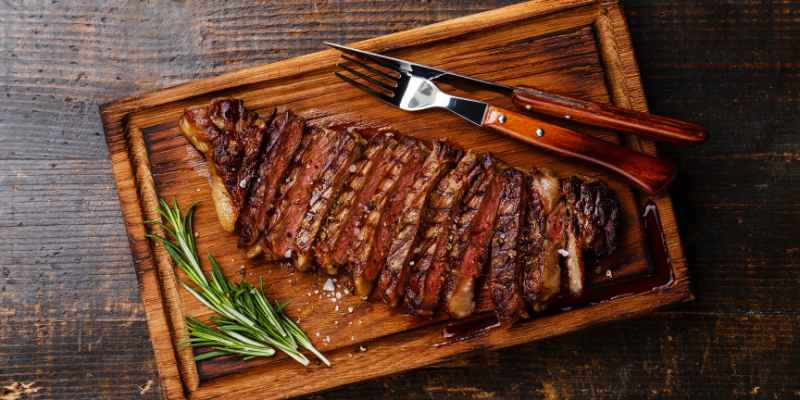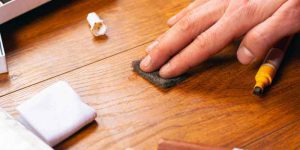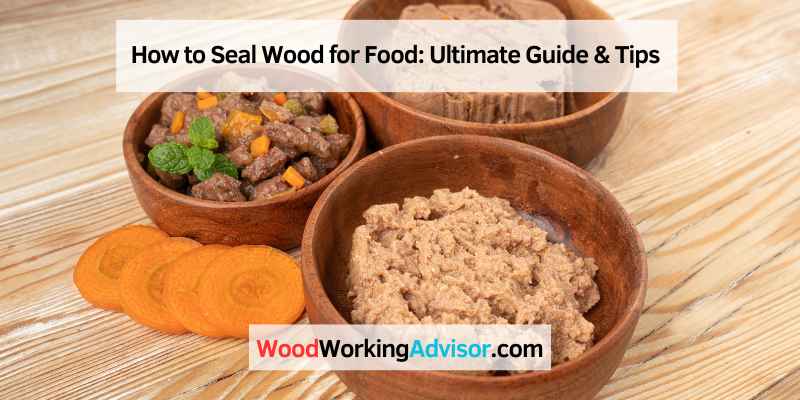To seal wood for food, use food-safe sealants like mineral oil or beeswax for protection. These sealants create a barrier that prevents liquids and bacteria from penetrating the wood.
When preparing wooden surfaces for food use, it is crucial to ensure they are properly sealed to maintain hygiene and prevent contamination. By following the right sealing techniques, you can enjoy using wooden cutting boards, countertops, and utensils safely in your kitchen.
Properly sealed wood not only enhances the durability of these items but also adds a natural and aesthetic appeal to your culinary space. Let’s delve deeper into the importance and methods of sealing wood for food-grade applications.
Introduction To Sealing Wood For Food
Learn how to seal wood for food safety. Protect wooden surfaces with food-grade sealants to prevent contamination. Ensure a healthy food preparation environment by sealing wood properly.
When it comes to food preparation, wood is a popular choice due to its natural beauty and durability. However, using untreated wood in food preparation can lead to bacteria growth and contamination, making it unsafe for consumption. This is where sealing wood for food comes in.
Sealing wood creates a protective barrier that prevents bacteria from penetrating the surface and makes it safe for use in food preparation. In this article, we will explore why sealing wood is important, the types of wood used in food preparation, and how to properly seal wood for food.
Why Seal Wood?
Sealing wood for food is important for several reasons. First and foremost, it prevents bacteria growth and contamination, making it safe for use in food preparation. Additionally, sealing wood helps to preserve the wood and extend its lifespan, which is especially important for expensive or hard-to-find woods. Sealing also enhances the natural beauty of the wood and makes it easier to clean and maintain.
Types Of Wood Used In Food Preparation
Not all woods are created equal when it comes to food preparation. Some woods are more porous than others, making them more susceptible to bacteria growth and contamination. The following are some of the most commonly used woods in food preparation:
| Wood Type | Description |
|---|---|
| Maple | Hard, dense, and non-porous, making it a popular choice for cutting boards and butcher blocks |
| Cherry | Hard and durable, with a beautiful reddish-brown color that darkens over time |
| Walnut | Durable and naturally resistant to bacteria, with a rich, dark color |
| Bamboo | Renewable, lightweight, and durable, with a non-porous surface that resists bacteria growth |
Sealing wood for food is an important step in ensuring the safety and longevity of your wooden kitchen tools and surfaces. By understanding why sealing is important, the types of wood used in food preparation, and how to properly seal wood, you can enjoy the natural beauty and durability of wood in your kitchen for years to come.
Choosing The Right Sealant
When it comes to sealing wood for food use, choosing the right sealant is crucial for ensuring the safety and longevity of the surface. The sealant not only protects the wood from moisture and stains but also prevents the growth of harmful bacteria. By selecting the appropriate sealant, you can safeguard the wood while maintaining its natural beauty and integrity.
Food-safe Sealants
Food-safe sealants are specifically designed to be non-toxic and safe for contact with food. They create a protective barrier that is resistant to moisture and stains, making them ideal for sealing wood surfaces that come into direct contact with food.
Pros And Cons Of Popular Sealants
Choosing the right sealant involves considering the pros and cons of popular options to find the best fit for your specific needs. Each type of sealant offers unique benefits and drawbacks, so it’s essential to weigh them carefully before making a decision.
Preparation Before Sealing

Before sealing wood for food, it is crucial to properly prepare the surface to ensure a safe and effective sealing process. This involves cleaning the wood and sanding it for smoothness. Let’s delve into each step to understand the importance of these preparations.
Cleaning The Wood
Prior to sealing, it is essential to clean the wood surface thoroughly. This removes any dirt, dust, or debris that may be present, ensuring a clean and hygienic surface for food contact. Here’s a step-by-step guide to cleaning the wood:
- Start by removing any loose dirt or particles with a soft brush or cloth.
- Prepare a mild solution of warm water and a gentle dish soap.
- Dip a sponge or cloth into the soapy water and gently scrub the wood surface.
- Rinse the wood with clean water to remove any soap residue.
- Allow the wood to dry completely before proceeding to the next step.
Sanding For Smoothness
After cleaning, the next step in preparing the wood for sealing is sanding. Sanding helps to create a smooth and even surface, ensuring proper adhesion of the sealant. Here’s how to sand the wood:
- Choose the appropriate sandpaper grit based on the condition of the wood. For rough surfaces, start with a coarse grit (around 80-120), and for smoother surfaces, use a finer grit (around 180-220).
- Wrap the sandpaper around a sanding block or use a sanding machine for larger areas.
- Gently sand the wood surface in the direction of the grain. Avoid applying too much pressure, as it may damage the wood.
- Continue sanding until the surface feels smooth and any rough spots or imperfections have been removed.
- Once the sanding is complete, remove any sanding residue with a soft brush or cloth.
By thoroughly cleaning and sanding the wood, you create an ideal foundation for the sealing process. These preparatory steps ensure that the sealant adheres well to the wood surface and provides a protective barrier against moisture and food particles.
Step-by-step Sealing Process
When it comes to sealing wood for food, following a step-by-step process is essential to ensure the safety and longevity of the sealed surface. The sealing process not only protects the wood from moisture and food particles but also helps in maintaining its natural beauty. Here’s a detailed guide on the step-by-step sealing process to help you achieve a food-safe and durable wood surface.
Applying The First Coat
Begin by cleaning the wood surface thoroughly to remove any dust, dirt, or debris. Use a gentle wood cleaner and allow the surface to dry completely. Next, choose a food-safe wood sealer such as natural oils (like mineral oil or walnut oil) or beeswax. Apply the first coat of the sealer evenly using a clean cloth or a brush, following the wood grain. Ensure that the entire surface is covered with a thin, uniform layer of the sealer.
Drying And Reapplying
Allow the first coat of sealer to dry completely as per the manufacturer’s instructions. This may involve letting the wood sit for a specified period or using a fan to aid in the drying process. Once the first coat is dry, assess the wood surface for any uneven or missed spots. If necessary, lightly sand the surface and apply a second coat of the food-safe sealer. Repeat the drying process, if required, until the wood is adequately sealed and protected.
Maintaining Sealed Wood
When it comes to maintaining sealed wood for food, regular cleaning and reapplying sealant are essential to keep the wood in top condition and ensure it remains safe for food contact.
Regular Cleaning Tips
To maintain sealed wood used for food, it’s crucial to clean it regularly to prevent the buildup of dirt, grime, and bacteria. Use a mild dish soap and warm water to gently clean the surface, and avoid using harsh chemicals that can degrade the sealant.
When To Reapply Sealant
Over time, the sealant on wood surfaces used for food can wear down, leading to a loss of protection. Monitor the wood for signs of wear, such as water no longer beading on the surface, or a change in the wood’s appearance. When these signs are noticed, it’s time to reapply the sealant to maintain the wood’s protective barrier.
Common Mistakes To Avoid
When sealing wood for food, it is essential to avoid common mistakes that could compromise safety. Ensure to use food-safe sealants and follow proper application techniques to prevent contamination. Be cautious of using toxic chemicals that can leach into food and jeopardize consumer health.
Using Non-food-safe Products
Some products may contain harmful chemicals that can leach into the wood and contaminate food.
Skipping Preparation Steps
Properly preparing the wood ensures a good seal and prevents potential issues.
DIY Sealant Recipes
When it comes to sealing wood for food, using DIY sealant recipes can be a safe and cost-effective option. Here are some natural and eco-friendly sealant options that you can easily make at home:
Natural Oil Mixtures
Natural oil mixtures offer a simple and effective way to seal wood for food. Here are some common oils that you can use:
- Mineral oil: Odorless and food-safe
- Coconut oil: Natural and antimicrobial
- Linseed oil: Provides a durable finish
Beeswax-based Sealants
Beeswax-based sealants are another popular option for sealing wood. They provide a protective barrier and a natural sheen. Here’s a basic recipe to make your own beeswax sealant:
- Melt beeswax in a double boiler
- Combine with mineral oil
- Apply the mixture to the wood surface
Safety Tips When Sealing Wood
When sealing wood for food, prioritize safety with these essential tips. Begin by selecting a food-safe wood sealer and ensure the wood is sanded smooth before applying the sealer. Allow the wood to dry completely before using it for food preparation.
Regularly inspect the sealed wood for any signs of wear and reapply the sealer as needed to maintain its protective qualities.
Proper Ventilation
Open windows and doors to allow fresh air to circulate.
Wearing Protective Gear
Use gloves and a mask to protect skin and lungs.

Frequently Asked Questions
Q: Why Is It Important To Seal Wood For Food?
A: Sealing wood for food prevents bacteria from growing and helps maintain the quality and freshness of the food. It also extends the lifespan of the wood and prevents it from warping or cracking.
Q: What Materials Can Be Used To Seal Wood For Food?
A: Some materials that can be used to seal wood for food include mineral oil, beeswax, and food-grade sealers. These materials are safe for consumption and can help protect the wood from moisture and bacteria.
Q: How Often Should I Seal My Wooden Cutting Board For Food?
A: It is recommended to seal your wooden cutting board at least once a month to maintain its quality and prevent bacteria growth. However, the frequency of sealing may vary depending on the amount of use and exposure to moisture.
Conclusion
To conclude, properly sealing wood for food is essential to ensure its safety and longevity. By following the steps outlined in this blog post, you can confidently protect your wooden surfaces from moisture, stains, and bacterial growth. Remember to choose a food-safe sealant, prepare the wood adequately, and apply multiple coats for optimal results.
With these guidelines in mind, you can enjoy using and displaying your wooden kitchenware and furniture for years to come.


